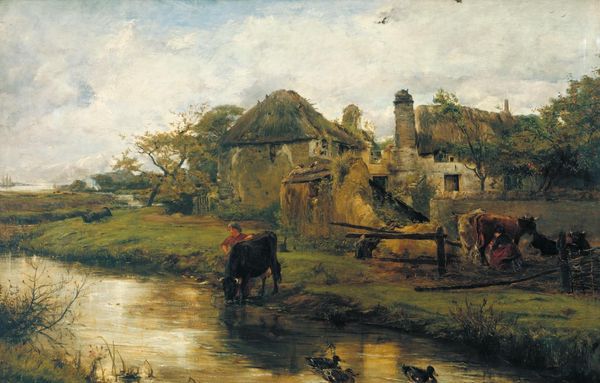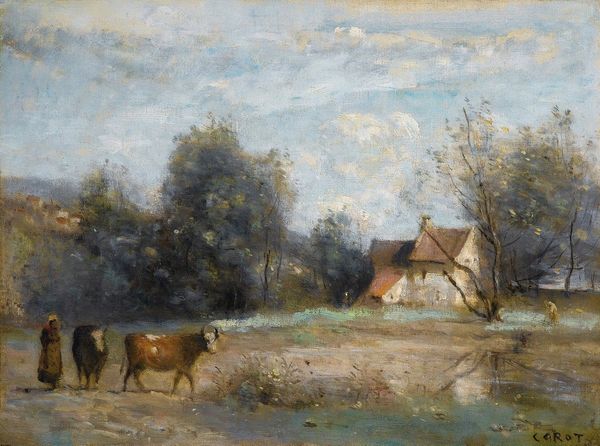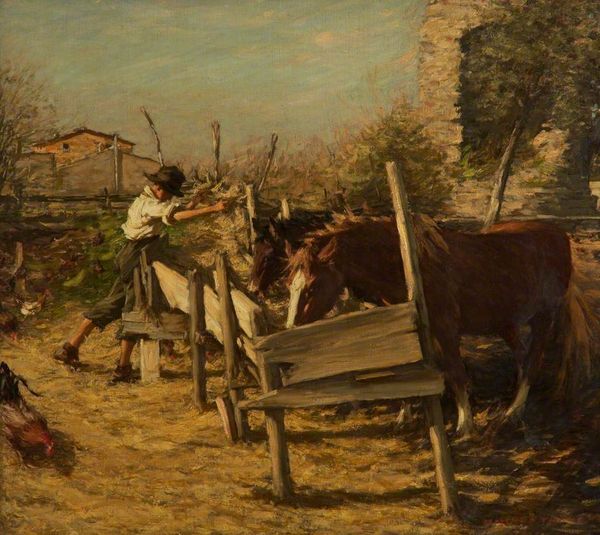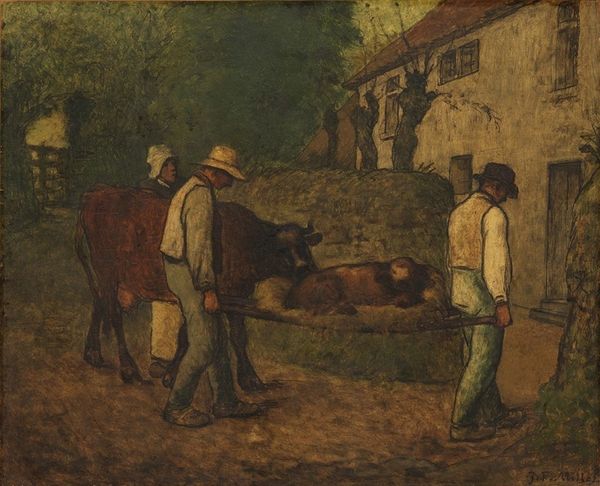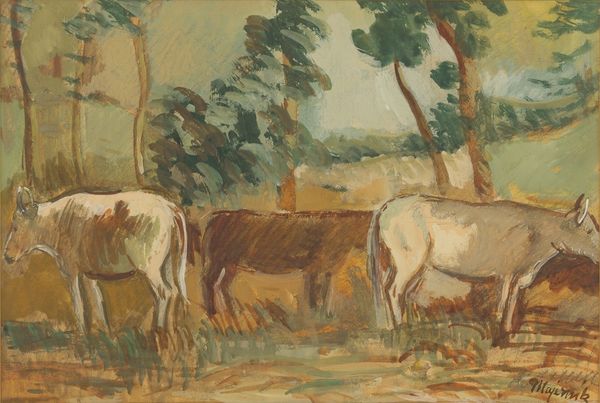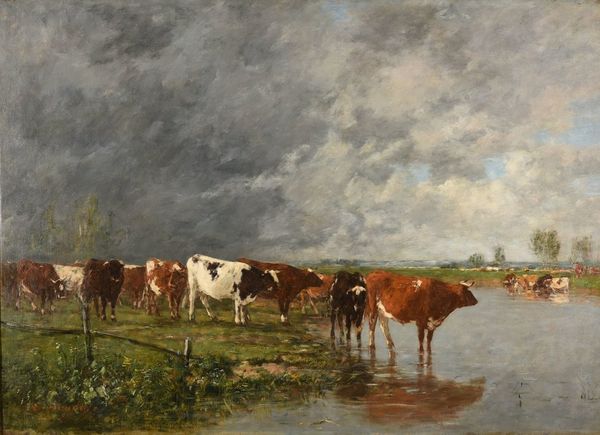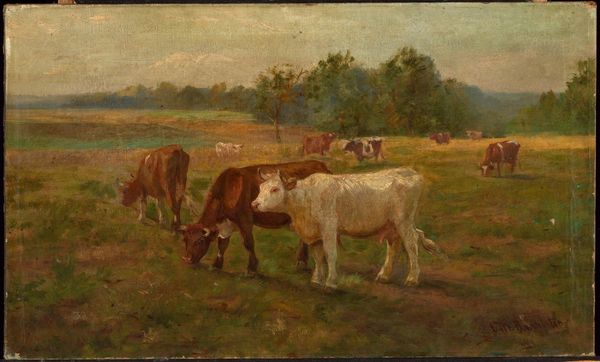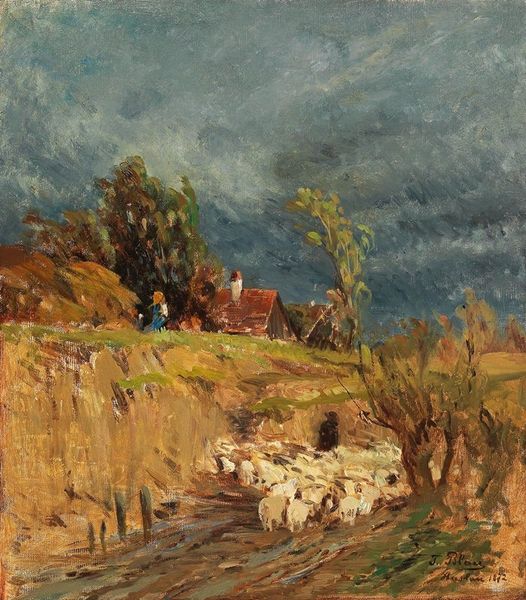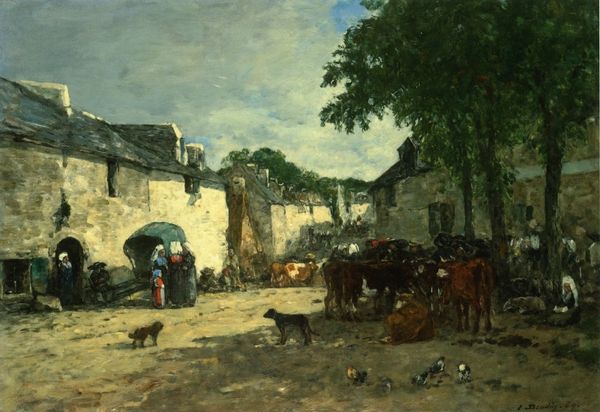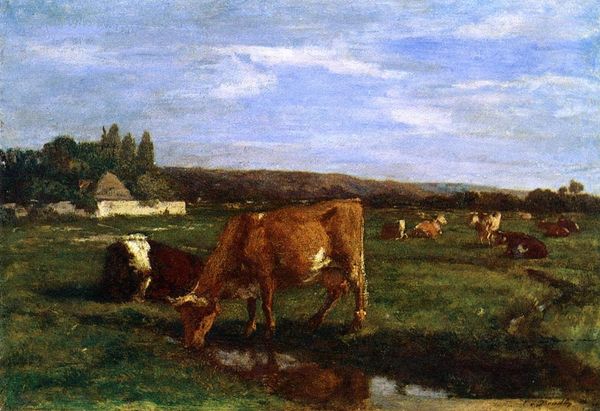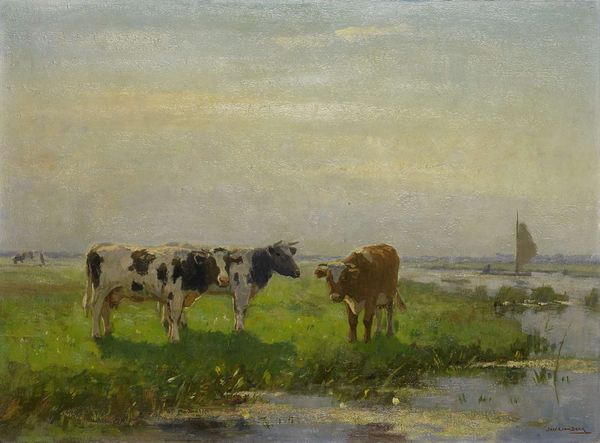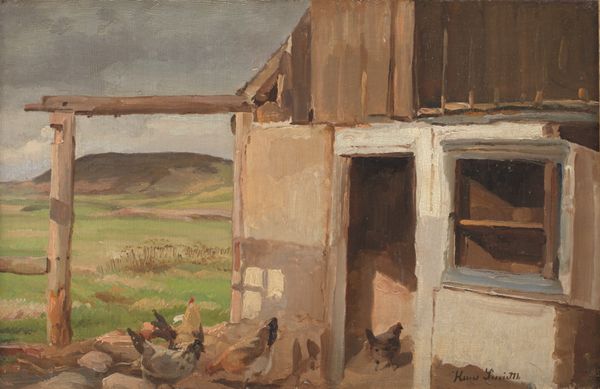
painting, oil-paint
#
animal
#
painting
#
oil-paint
#
landscape
#
oil painting
#
genre-painting
#
realism
Copyright: Public Domain: Artvee
Editor: We're looking at "At the Water Trough," an oil painting, likely by Gustave Courbet, although it's undated. What strikes me is the rustic simplicity. Two cows are drinking at a trough in what seems to be a farmyard. It’s quite a common subject. How do you interpret its significance? Curator: What I see here are raw materials speaking volumes about rural production and labor. Consider the pigment – likely sourced from the very earth depicted, ground and bound, and applied with evident physicality. Look closely at the facture; the strokes themselves enact the labor of representation. How does this materiality challenge conventional academic painting? Editor: Well, the visible brushstrokes definitely deviate from the smooth surfaces often preferred. I hadn’t considered the link between the pigment and the land, but that adds another layer. What about the choice of subject? Curator: The genre scene becomes less about idyllic pastoral life and more about representing labor, the animals a form of agricultural capital, essential to the modes of production. The setting—rough and utilitarian—isn't presented for aesthetic pleasure alone, but to highlight the material conditions that govern rural life. Can you see how it contrasts with more romantic portrayals of nature? Editor: Absolutely. It feels very grounded, focused on the necessities. Is that a political statement, do you think? Curator: In its depiction of the everyday toil, and the value put on this scene, it's making a statement about what is worthy of representation. The emphasis on the physical – the weight of the animals, the density of the paint, challenges traditional hierarchies in art, disrupting any clear distinction between the art object and its making, its value found in this tension. Editor: It’s fascinating to consider how the materials and the way they are handled directly reflect the scene's realities. Curator: Indeed. We come to see it as Courbet actively democratizing the landscape through material means, subverting conventional art-historical narratives.
Comments
No comments
Be the first to comment and join the conversation on the ultimate creative platform.
